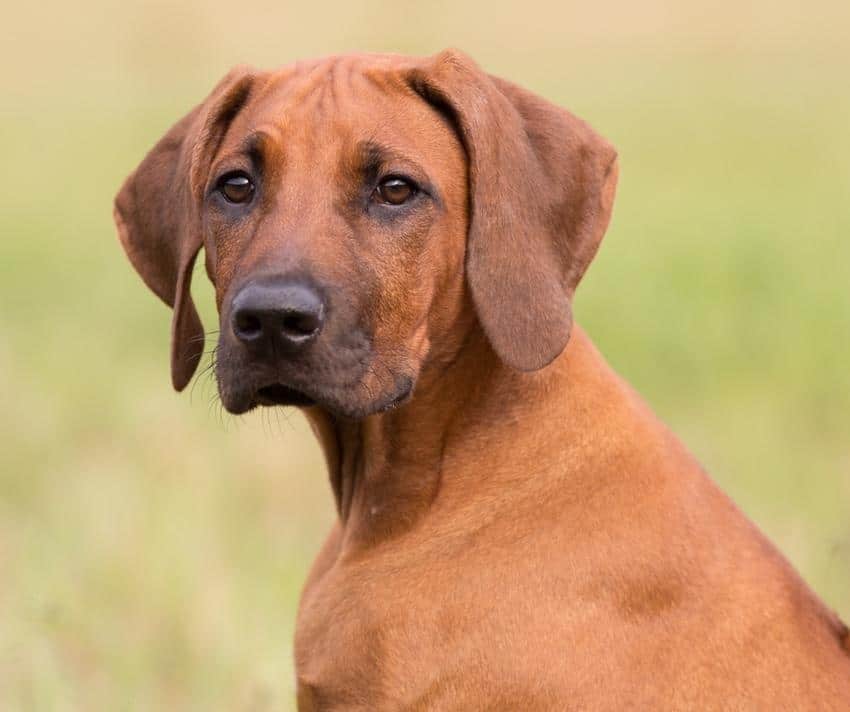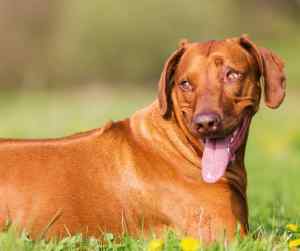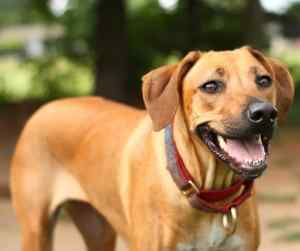- Rhodesian Ridgebacks
- All About Rhodesian Ridgebacks – Dogs and Puppies
- Introduction Unveiling the Ultimate Rhodesian Ridgeback Owner’s Guide
- The History and Origins of Rhodesian Ridgebacks
- Understanding the Unique Characteristics of Rhodesian Ridgebacks
- Choosing the Perfect Rhodesian Ridgeback Puppy What to Look For
- Essential Training Tips for Rhodesian Ridgeback Owners
- Feeding and Nutrition A Guide to Keeping Your Ridgeback Healthy
- Grooming and Coat Care Maintaining Your Ridgeback’s Distinctive Ridge
- Exercise and Mental Stimulation Keeping Your Ridgeback Happy and Active
- Health Concerns and Common Medical Issues in Rhodesian Ridgebacks
- Socialization and Interaction Building a Strong Bond with Your Ridgeback
- Rhodesian Ridgebacks as Family Pets Compatibility and Safety Considerations
- Advanced Tips and Tricks for Rhodesian Ridgeback Owners Taking Your Ownership Experience to the Next Level
- Further Reading on Rhodesian Ridgebacks
All About Rhodesian Ridgebacks – Dogs and Puppies
Welcome to the captivating world of Rhodesian Ridgebacks, a large dog breed renowned for its distinctive spinal ridge, muscular frame, and storied history as a lion-hunting companion in Southern Africa.
Our in-depth guide unveils every facet of this regal breed, from its origins amidst the African plains to its current status as a steadfast protector and family member. Explore the storied past of the Ridgeback, whose ancestry intertwines with the native Khoikhoi dogs and the early European settlers’ hounds, culminating in a breed that’s as rich in history as it is in spirit.
Uncover the unique temperament of these dogs, characterized by their loyal yet independent nature, and learn how their intelligence and athleticism make them versatile companions in both work and play.
Step into the daily life of a Rhodesian Ridgeback owner with our comprehensive coverage of the breed’s health and care. Understand the full spectrum of their lifespan, typically ranging from 10 to 12 years, and get acquainted with the common health concerns specific to the breed, such as hip dysplasia and dermoid sinus.
Delve into the essentials of proper nutrition, exercise, and grooming that are key to maintaining the well-being of these robust canines. Moreover, our guide offers a treasury of striking photos that showcase the Ridgeback’s majestic appearance, from their expressive eyes to their sleek, wheaten-colored coat that can range from light to dark shades.
Beyond the basics, our guide extends to a collection of thoughtfully curated articles that provide insights on the most fitting names for your Rhodesian Ridgeback puppy, capturing the essence of their African heritage or their valiant demeanor.
Whether you are considering welcoming one of these dogs into your home or already share your life with a Ridgeback, we provide an understanding of their price range, ensuring future owners are well-informed about the financial commitment involved.
Engage with stories from fellow Ridgeback enthusiasts, discover training tips tailored to their unique personality, and connect with a community that celebrates every nuance of this extraordinary breed. From the potential dog owner to the seasoned Ridgeback aficionado, our guide is the ultimate compendium for anyone enchanted by these noble hounds.
Introduction: Unveiling the Ultimate Rhodesian Ridgeback Owner’s Guide
Rhodesian Ridgebacks are a unique and fascinating breed of dog that have captured the hearts of many dog lovers around the world. Known for their distinctive ridge of hair along their backs, these dogs are not only beautiful but also possess a range of characteristics that make them excellent companions and working dogs. In this comprehensive guide, we will delve into the history, characteristics, training, grooming, health concerns, and more, to provide you with everything you need to know as a Rhodesian Ridgeback owner.
 Quick Facts About Rhodesian Ridgebacks
Quick Facts About Rhodesian Ridgebacks
- Country of Origin: South Africa/Zimbabwe
- Breed Classification: Hound
- Size: Large
- Physical Characteristics: Muscular and athletic build; distinctive ridge of hair running along the spine in the opposite direction to the rest of the coat.
- Lifespan: 10-12 years
- Average Cost: $1,000-$2,500
- Allergenic Properties: Not hypoallergenic
- Compatibility with Children and Other Pets: Generally good with children if properly socialized; can be dominant with other dogs.
- Health: Generally healthy but can be prone to hip dysplasia, deafness, and dermoid sinus.
- Trainability: Intelligent but can be independent; responds well to consistent, positive training methods.
- Grooming Needs: Low; short coat that requires minimal grooming.
- Exercise Requirements: High; needs plenty of exercises and does best with a job to do or space to run.
 The History and Origins of Rhodesian Ridgebacks
The History and Origins of Rhodesian Ridgebacks
The Rhodesian Ridgeback breed has a rich history that dates back to the 16th century in Southern Africa. They were originally bred by the indigenous Khoikhoi people and later refined by European settlers in Rhodesia (now Zimbabwe). These dogs were primarily used for hunting and guarding, with their ridge of hair serving as a distinguishing feature to track game. Today, they are still used for hunting, but they have also become popular as family pets and show dogs.
 Understanding the Unique Characteristics of Rhodesian Ridgebacks
Understanding the Unique Characteristics of Rhodesian Ridgebacks
Rhodesian Ridgebacks are known for their strong and muscular build, with a deep chest and powerful legs. They have a distinctive ridge of hair along their backs, which is formed by a reverse growth pattern. This ridge is a defining characteristic of the breed and sets them apart from other dogs. In terms of temperament, Ridgebacks are known for their loyalty, intelligence, and independence. They are protective of their families and can be reserved with strangers, making them excellent guard dogs.
Choosing the Perfect Rhodesian Ridgeback Puppy: What to Look For
When choosing a Rhodesian Ridgeback puppy, it is important to consider various factors to ensure you find the perfect match for your lifestyle. Look for a reputable breeder who prioritizes the health and temperament of their dogs. Consider the puppy’s parents and their health history, as this can give you an idea of potential genetic issues. Assess the puppy’s behavior and temperament, looking for signs of confidence, curiosity, and sociability. Additionally, consider the puppy’s physical attributes, such as the ridge and overall conformation, to ensure they meet breed standards.
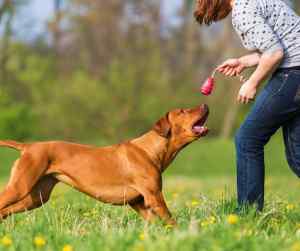 Essential Training Tips for Rhodesian Ridgeback Owners
Essential Training Tips for Rhodesian Ridgeback Owners
Training a Rhodesian Ridgeback requires patience, consistency, and positive reinforcement. These dogs are intelligent and eager to please, but they can also be stubborn at times. Start training early and focus on basic obedience commands such as sit, stay, and come. Socialization is also crucial, as Ridgebacks can be reserved with strangers and other animals. Expose them to various environments, people, and animals to ensure they grow up to be well-rounded and confident dogs.
Feeding and Nutrition: A Guide to Keeping Your Ridgeback Healthy
Proper nutrition is essential for the overall health and well-being of your Rhodesian Ridgeback. Choose a high-quality dog food that is specifically formulated for large breeds. Consider their age, activity level, and any specific dietary requirements they may have. Divide their meals into two or three smaller portions to prevent bloating, a common issue in deep-chested breeds. Monitor their weight and adjust their portion sizes accordingly. Provide fresh water at all times and avoid feeding them table scraps or foods that are toxic to dogs.
Grooming and Coat Care: Maintaining Your Ridgeback’s Distinctive Ridge
Despite their short coat, Rhodesian Ridgebacks do require regular grooming to keep them looking their best. Brush their coat once or twice a week to remove loose hair and prevent matting. Pay special attention to their ridge, as it can be prone to tangles. Bathing should be done as needed, using a gentle dog shampoo. Trim their nails regularly and clean their ears to prevent infections. Lastly, don’t forget to brush their teeth regularly to maintain good oral hygiene.
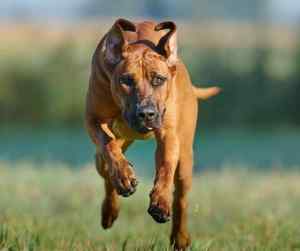 Exercise and Mental Stimulation: Keeping Your Ridgeback Happy and Active
Exercise and Mental Stimulation: Keeping Your Ridgeback Happy and Active
Rhodesian Ridgebacks are an active breed that requires regular exercise to keep them physically and mentally stimulated. Aim for at least an hour of exercise each day, which can include walks, runs, hikes, or playtime in a securely fenced yard. Engage them in mentally stimulating activities such as puzzle toys, obedience training, or agility courses. Without proper exercise and mental stimulation, Ridgebacks can become bored and develop destructive behaviors.
Health Concerns and Common Medical Issues in Rhodesian Ridgebacks
Like all dog breeds, Rhodesian Ridgebacks are prone to certain health issues. Some common medical concerns include hip dysplasia, elbow dysplasia, hypothyroidism, and dermoid sinus (a congenital skin defect). Regular veterinary check-ups, a balanced diet, and exercise can help prevent or manage these conditions. It is also important to be aware of the signs of potential health problems and seek veterinary care promptly if any issues arise.
Socialization and Interaction: Building a Strong Bond with Your Ridgeback
Socialization is crucial for Rhodesian Ridgebacks to ensure they grow up to be well-adjusted and friendly dogs. Expose them to various people, animals, and environments from a young age. Enroll them in puppy socialization classes and continue their training throughout their lives. Spend quality time with your Ridgeback, engaging in activities they enjoy and providing plenty of mental and physical stimulation. Building a strong bond with your dog will not only enhance your relationship but also contribute to their overall happiness and well-being.
 Rhodesian Ridgebacks as Family Pets: Compatibility and Safety Considerations
Rhodesian Ridgebacks as Family Pets: Compatibility and Safety Considerations
Rhodesian Ridgebacks can make excellent family pets, but it is important to consider their compatibility with your family dynamics and lifestyle. They are generally good with children, but supervision is necessary, especially with younger kids. Ridgebacks can be reserved with strangers, so early socialization is crucial. They have a strong prey drive, so caution should be exercised around small animals. Additionally, their protective nature makes them excellent guard dogs, but it is important to ensure they are properly trained and socialized to prevent any aggression issues.
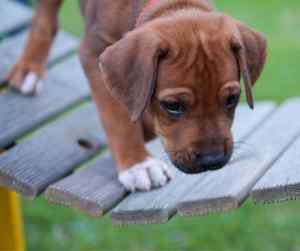 Advanced Tips and Tricks for Rhodesian Ridgeback Owners: Taking Your Ownership Experience to the Next Level
Advanced Tips and Tricks for Rhodesian Ridgeback Owners: Taking Your Ownership Experience to the Next Level
Once you have mastered the basics of owning a Rhodesian Ridgeback, there are advanced tips and tricks that can enhance your ownership experience. Consider participating in dog sports such as obedience trials, tracking, or lure coursing, which can provide mental and physical stimulation for your Ridgeback. Joining breed-specific clubs or organizations can also connect you with other Ridgeback owners and provide opportunities for further learning and engagement. Lastly, continue to educate yourself about the breed, stay up to date with the latest research and developments, and always prioritize the health and well-being of your beloved Ridgeback.
In conclusion, owning a Rhodesian Ridgeback can be a rewarding and fulfilling experience. By understanding their history, unique characteristics, training needs, grooming requirements, health concerns, and more, you can provide the best possible care for your Ridgeback. Remember to always prioritize their physical and mental well-being, and enjoy the journey of building a strong bond with your loyal and loving companion.

